(open) Digital Image Correlation
| Summary | |
|---|---|
| Date | Summer 2020 - Summer 2025 |
| Tags | full field measurements, digital image correlation, open source, open science, python |
| Partners | PolymerGuy, Nicolas Thuard, Alessandra Lingua, Stéphane Hu |
| Recruiting | Stéphane Hu (du 67) |
| Open Resources | https://www.zotero.org/groups/2460484/extremedic/items |
Digital Image Correlation
Digital Image Correlation (DIC) techniques aim at measuring the displacement of a surface out of 2D or 3D1 consecutive images of a deforming surface. DIC methods rely on image tracking and registration methods to track the movement of various areas of the image. The following example, from the muDIC documentation, helps understand the basic idea of DIC.
Suppose we have a white surface that we cover with tiny crosses like this one +. Once the surface deforms, if we capture images of the surface at regular intervals while it is deforming, the movement of the + crosses can help us understand and even quantify the displacement at various places of our suface. This example is presented in the following figure:
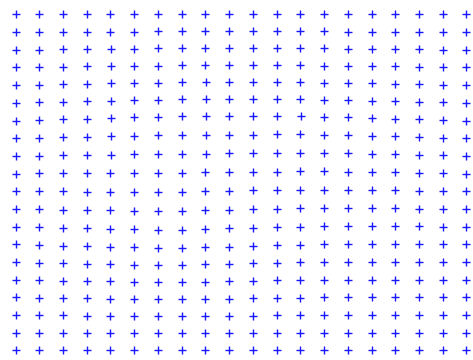
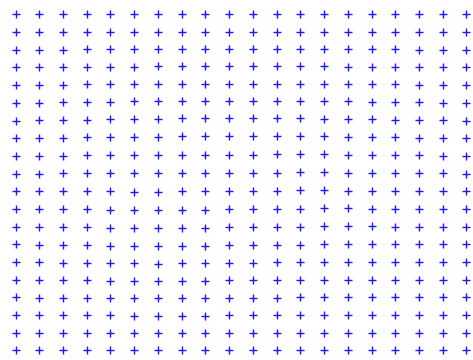
The initial square surface covered with + crosses is shown on the left. An animation of the deforming surface is shown on the right (from 2 ).
DIC thus requires:
- A surface that deforms (well it can not deform but…)
- A camera, to capture consecutive images of the surface that is deforming
- A kind of pattern (similar to the + crosses) that would be used to track local motion
The pattern is called a speckle pattern as it is often made using a random arrangement of paint dots. The speckle pattern is sometimes made using a can of spray paint, an airbrush, stamps and, in some cases, the surface of the material itself has enough randomness/roughness to be used as a speckle pattern. The following figure shows two examples of real deforming speckle patterns:
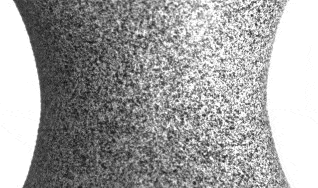
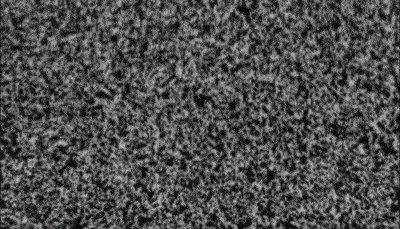
Left: Mineral filled PVC under monotonic load3. Right: Interfacial debonding of a 1mm in diameter PTFE fiber embedded in Epoxy, tensile load is applied along the vertical direction 4
After covering a specimen with a speckle pattern, the specimen is setup in some kind of testing equipment (such as a tensile testing machine). Cameras are setup in front of the machine in order to capture consecutive images of the surface that was covered with a speckle pattern. It is usually necessary to undergo some sort of spatial calibration here in order to later be able to perform accurate metric measurements on the captured images. The following video presents the main steps of a real DIC experiment:
Selected extracts from ‘DIC forever’, I. Tabiai, M. Moeini, A. Lingua, K. Chizari.
After analyzing an experiment, it is possible to explore full field results in a variety of ways. Since the complete displacement and strain fields are known, it is possible to inspect various areas using virtual extensometers or local averages.
Heterogeneous materials
DIC is an interesting technique as it is an easy way to gather information about the local behavior (displacement field) of a material. Nowadays, most methods available in labs to measure strains or displacements are designed to either measure the local strain in a single point (strain gauge) or to measure the global strain over a complete specimen (extensometers). DIC provides a way to measure the local behavior of a material as if the material were completely covered with strain gauges. Such fine information is not mandatory in the case of homogeneous materials (such as metallic materials) since it is fairly possible to, given a certain loading and specimen geometry, assume that the material is undergoing continuous (often even linear) deformation.
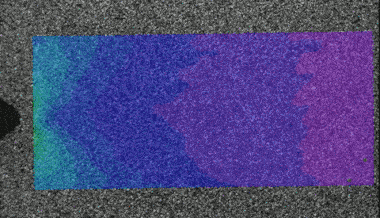
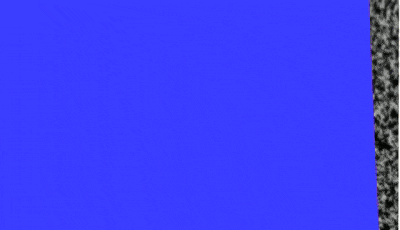
Left: Stable crack growth within a CT specimen laser cut out of a PMMA sheet, the vertical strain field was measured using Digital Image Correlation, the applied load is also along the vertical direction 5 . Right: Interfacial debonding of a 1mm in diameter PTFE fiber embedded in Epoxy, tensile load is applied along the vertical direction4.
This assumption does not hold in the case of heterogeneous materials (such as composite materials) as the material itself is full of discontinuities (cracks, interfaces). DIC is thus becoming a critical tool when it comes to better understanding and characterizing the behavior of heterogeneous materials.
Open Source software relevant for this project
A fully open source stereo DIC system thus requires an acquisition system capable of simultaneously acquiring images from several cameras at the same time, and an open source DIC analysis software.
\(\mu\)DIC
\(\mu\)DIC is a python toolktit for DIC written in Python. It contains tools designed to perform DIC analysis on experimental data as well as tools to perform virtual DIC experiments. There’s also a nice publication about the projet5. The package was developed by:
- Sindre Olufsen - Implementation - PolymerGuy
- Marius Endre Andersen - Wrote the Matlab code on which this is based
Digital Image Correlation engine (DICe)
DICe is an open source DIC tool intended for use as a module in an external application or as a standalone analysis code. Its primary capabilities are computing full-field displacements and strains from sequences of digital images and rigid body motion tracking of objects. It supports stereo-DIC through opencv calibration, it is capable of subset based and global DIC.
ets-lipec/camera_toolkit
This toolkit is a homemade python package that can be used to simultaneously trigger/acquire 3 different kinds of devices:
- USB webcams compatible with opencv
- Any camera that can be triggered using gphoto2
- The ADC channel of an Arduino
This package can be used to trigger one or several DSLRs while also acquiring frames from one or several opencv webcams and acquiring the votlage value from an arduino. It can be used to acquire data for DIC analysis while testing a mechanical part as the force value from the tensile testing equipment can be acquired through the arduino as a 0/5V signal at the same moment a picture is acquired. Since it supports several cameras simultaneously (it uses threading to do so) it can be used for stereo-DIC. Information about each shot is saved in a database.
It’s an ongoing work.
References and Notes
-
Volumetric Digital Image Correlation is not considered here. ↩
-
muDIC documentation, A crash-course in Digital Image Correlation ↩
-
Olufsen, Sindre Nordmark, Arild Holm Clausen, Dag Werner Breiby, and Odd Sture Hopperstad. X-Ray Computed Tomography Investigation of Dilation of Mineral-Filled PVC under Monotonic Loading. Mechanics of Materials 142 (March 1, 2020): 103296. ↩
-
Tabiai I., Delorme R., Therriault D. et al. In-situ Full Field Measurements During Inter-Facial Debonding in Single Fiber Composite Under Transverse Load. Exp Mech 58, 1451–1467 (2018) ↩ ↩2
-
Olufsen, Sindre Nordmark, Marius Endre Andersen, and Egil Fagerholt. μ DIC: An Open-Source Toolkit for Digital Image Correlation. SoftwareX 11 (January 2020): 100391. ↩ ↩2
Leave a comment